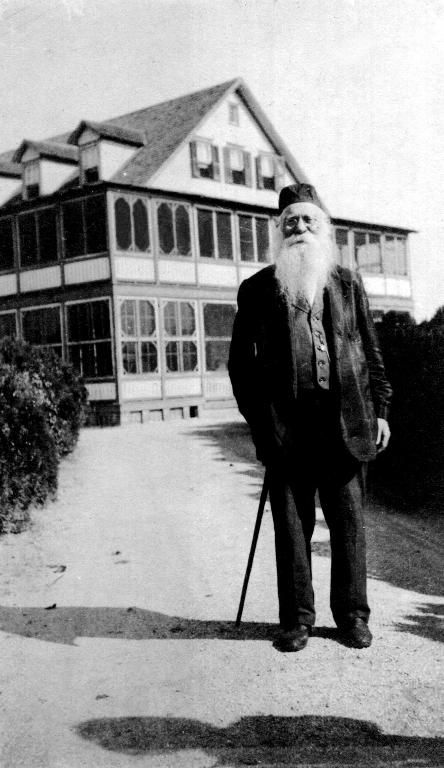Interview: Amy Smith, Inventor
Amy Smith, a practitioner of humanitarian engineering, wants to solve everyday problems for rural families in the developing world
/https://tf-cmsv2-smithsonianmag-media.s3.amazonaws.com/filer/smith3.jpg)
Amy Smith, who has a master's degree in mechanical engineering and teaches at MIT, isn't interested in building faster computers or bigger jetliners. She's thinking about how to cook dinner in a Haitian slum. Most of Haiti has been deforested, few people have electricity, and fossil fuels are prohibitively expensive. But there's something Haiti has a lot of: bagasse, or sugar-cane fibers left over after processing. Smith and her students have developed a way to turn this plentiful (and otherwise useless) material into clean-burning charcoal by carbonizing it in a covered oil drum. It's a simple solution to a simple problem, but—like many of Smith's projects—it makes a big difference in ordinary people's lives.
Smith, a practitioner of humanitarian engineering, wants to solve everyday problems for rural families in the developing world: where to find clean water, how to preserve vegetables for market, how to do laundry without electricity or plumbing. Smith's inventions include a hammer mill for grinding grain into flour—a task African women usually do by hand—and a portable kit to test drinking water for contaminating bacteria. Smith, who was awarded a Macarthur Fellowship in 2004, runs MIT's IDEAS Competition, for which teams of student engineers design projects to make life easier in the developing world.
What would you say was the coolest project that you've worked on?
Well, it's not very romantic, but I think our charcoal project is going to have a huge impact, because it allows you to have a clean-burning fuel without cutting down trees. We're planning large-scale dissemination in Haiti. There's no glitz factor to it, but it's probably going to make a huge amount of difference.
Have the inventions that come out of your class and out of the IDEAS competition proved successful in the field?
Some of the IDEAS competition winners have been very successful. The compound water filter, which removes arsenic and pathogens, is now deployed quite extensively in Nepal. The Kinkajou microfilm projector, used in nighttime literacy classes, is being deployed in Mali. We’re working to commercialize a system for testing water for potability. It's in the field in several countries, but not on a widespread basis. We're looking towards doing a trial of aerosol vaccines in Pakistan, so that's exciting.
What is the biggest problem facing rural communities in the developing world?
I don't think you can say there's a single one. Obviously access to safe drinking water is a huge problem, and lack of access to opportunities, and general poverty. But if you get people safe drinking water, and then they still have no way to earn any money to feed their families, you still have a problem. And if you give them better methods of agricultural processing or ways to create clean energy, but there's still drinking water that makes them sick, you still have a problem. There are too many interrelated issues, so solving one problem won't completely change the lives of millions.
You lived in India as a child and you were in the Peace Corps in Botswana in the 1980s. How did those experiences lead to what you're doing now?
As a very young child I was exposed to very severe poverty, so I always wanted to do something to help kids around the world. Living in India is something that stayed with me—I could put faces on the kids who had so little money. In Botswana, I was teaching and then working for the ministry of agriculture as a beekeeper, and I remember thinking to myself that I really liked doing development work, but I wished could do some engineering too, because I like creative problem solving. People in the developing world scrape every last ounce of life that they can out of objects, and my students used to bring me things to fix, and I always enjoyed being able to do that.
You’ve said that engineering schools focus too much on defense and consumer electronics—what changes would you like to see in the way engineering is taught?
It would be great if students recognized that engineering with a humanitarian focus is as legitimate as aerospace and automotive engineering. Service learning is actually a very good way to teach engineering, because it motivates students to continue, and it appeals especially to women and minorities.
You are a woman in what is still a male-dominated field. What can we do to encourage more women to become engineers?
Actually, because my class involves humanitarian engineering, I very rarely have more men than women. There have been times where there have been ten women and one man. This isn't surprising, given that women often want to see an application to what they're learning that they feel is worthwhile. But I'm not involved in any particular projects to encourage women engineers, because I dislike being referred to as a woman engineer. I don't like programs that single out woman engineers as particular achievers just for being women. I think that it should be coincidental. What we should be striving for is a world where when we see women or minorities who are high achievers, it isn't surprising. We shouldn't be thinking, "Good for them!" just because of their race or gender. I think we're a long, long way from that, but I don't think we should keep implying that there's something special about being a woman engineer. I want people who meet me to say, "I like the work that you're doing." I want to be known as an engineer who designs solutions for the developing world. After that people can notice that I'm a woman.
/https://tf-cmsv2-smithsonianmag-media.s3.amazonaws.com/accounts/headshot/amy.png)



/https://tf-cmsv2-smithsonianmag-media.s3.amazonaws.com/accounts/headshot/amy.png)